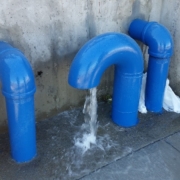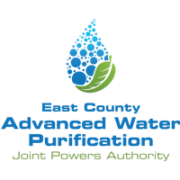If you’ve ever driven past pipes sticking out of the ground and wondered, “What is that thing?” you aren’t alone. While sitting at a red light one day, Olivenhain Municipal Water District Customer Services Manager John Carnegie glanced at a pipe and realized there were probably members of the public who are unaware of the role key water infrastructure objects in their neighborhoods play in delivering safe, reliable water.
“OMWD’s #WhatIsThatThing social media campaign is a great way to inform our customers who may be unaware of all the water and wastewater infrastructure around them,” said OMWD Board Secretary Bob Kephart. “It’s a fun way to create a better understanding of the district’s work.”
Water infrastructure mysteries
“It’s easy to forget the long path it takes to get safe and reliable water to your tap,” said OMWD Board President Ed Sprague. “Most people think only as far as their water meter, not to the infrastructure all around them.”
Posts feature a photo and description provided by Olivenhain field service technicians who are out in the district working on service assignments. District spokesman Arman Tarzi says they pass contributions along when they see something the public might want to know more about.
“Our field services staff are happy to contribute ideas and are strong partners in this project,” said Tarzi.
#WhatIsThatThing provides community education
Tarzi said the images help members of the community understand how infrastructure in their area functions.
“For example, you might see a pipe with water coming out of it, and think its leaking,” he said. “But it may be a vault relief doing its job properly, so the social media campaign can help relieve concerns while providing information in a fun way.”
Tarzi said as the public increasingly engages in outdoor activity during the COVID-19 pandemic, the public may be curious of all the infrastructure around them, which is maintained by OMWD’s essential employees.
“The #WhatIsThatThing creates an appreciation for everything OMWD does to build and maintain our water infrastructure,” said Kephart. “With these posts, we are showing that water infrastructure is everywhere and OMWD is always proactive in maintaining our system.”
#WhatIsThatThing? Inside this tan enclosure is a 2-inch Air Relief Valve that is installed on the distribution water main. The purpose of this valve is to release air pockets that collect at each high point of a fully pressured pipeline. Water infrastructure is all around you!
Posts in the #WhatIsThatThing social media series began appearing on Olivenhain’s Facebook and Twitter accounts in June. The next posts are scheduled this week.




